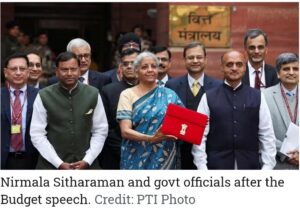Efficient fund utilisation is crucial, and the government must judiciously identify the beneficiaries, ensuring the removal of fictitious claimants

The Union government implements numerous welfare programmes to achieve various socioeconomic goals and national priorities. This is primarily done through central schemes (CS) fully funded and executed by the government and through centrally sponsored schemes (CSS) funded both by the Centre and states in varying proportions, such as 90:10, 60:40, and so on. These schemes are implemented by the states.
The total expenditure of the Centre in FY 2022–23 on these schemes was Rs 1,620,000 crore (Rs 1,208,000 crore on 740 CSs; Rs 412,000 crore on 50 CSSs), constituting 41% of the total budget spending of Rs 3,940,000 crore.
Efficient fund utilisation is crucial, and the government must judiciously identify the beneficiaries, ensuring the removal of fictitious claimants. At the same time, transparent delivery mechanisms are imperative.
Previously, under fragmented banking arrangements, the Centre transferred funds to the implementing agencies (IAs), resulting in inefficient cash management and uneven distribution. While some IAs faced fund shortages, others were sitting on idle money. Consequently, the government was forced to resort to short-term borrowing, imposing an additional interest burden.
For CSS schemes, the Centre transferred funds to states, which in turn transferred them, after adding their shares, to the IAs. However, many states delayed the transfers, causing the funds to lie idle.
In FY 2022–23, the Centre adopted a Treasury Single Account (TSA), with close to 200 autonomous bodies receiving funds through this account maintained with the Reserve Bank of India (RBI). Similarly, two other accounts—a central nodal agency system (CNAS) for central schemes and a single nodal agency (SNA) model for CSSs—were opened.
The new system requires states to identify and designate an SNA account for each scheme, ensuring prompt fund release and minimising idle funds. The Centre releases funds through these accounts with a minimum float allowed, meaning only a quarter of the money is released, with the rest to be given only after evidence of using the earlier 75% is furnished and year-end release is avoided.
Additionally, in June 2022, Finance Minister Nirmala Sitharaman launched an SNA dashboard under the Public Financial Management System (PFMS), with details of the release of funds made to different states, further releases made by state treasuries to the SNA accounts, expenditures reported by the IAs, etc.
This mechanism regulates the release of funds and tracks their use, thereby preventing idling and preventing states from diverting funds. As for the outcome, according to the RBI, the number of accounts for CSS schemes has fallen from a whopping 1,800,000 to 3,300. Besides, the Centre saved around Rs 10,000 crore in interest during FY 2022–23.
But these savings are a paltry 0.9% of the annual interest payments by the Centre of Rs 1,080,000 crore (FY 2023–24). Moreover, given that at any given point in time, as much as Rs 150,000–200,000 crore of central funds lies with state treasuries/IAs, there is scope for more savings by eliminating the free float.
The Centre intends to roll out a new mechanism. This will require each state IA to maintain an account with the RBI for each scheme. Instead of releasing money to the IA, the Centre will issue an authorization to the RBI, as per the sharing pattern for the scheme. The concerned state will also need to give a similar authorization to the RBI.
When the actual payment need arises, the state will move the payment file to the Centre, which will pass it on to the RBI. The RBI, which already has the authorization, will release the amount to the agency from the Consolidated Fund of India (CFI) first and then from the State Consolidated Fund (SCF). This mechanism will help avoid idle funds since the funds don’t need to be parked either with the state treasuries or the bank accounts of IAs. This also helps the Centre in another way. Out of CSS spending/releases of Rs 412,000 crore during FY2022-23, Rs 180,000 crore remained unspent. Had the proposed mechanism been in place, the Centre could have restricted the allocation to Rs 232,000 crore, thereby improving its fiscal position. Likewise, the states can save money to the extent that their contribution to the IAs is released from SCF only when demand arises.
The Centre has rolled out a pilot scheme for the Jal Jeevan Mission in three states: Rajasthan, Karnataka, and Odisha. After the pilot, it plans for the pan-India rollout of the scheme.
(The writer is a policy analyst)
https://www.deccanherald.com/opinion/synchronise-fund-release-with-need-2895057